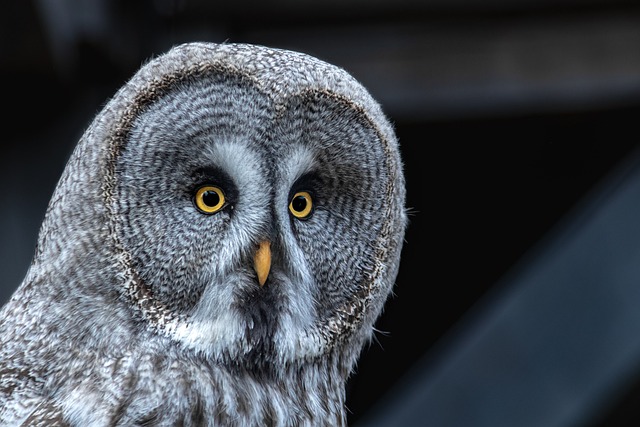The Nocturnal Symphony of Owl Courtship
In the depths of moonlit forests, a captivating ritual unfolds as owls engage in their intricate courtship dance. This fascinating display of avian romance combines haunting calls, elaborate aerial maneuvers, and subtle gestures, creating a nocturnal symphony that has enchanted naturalists and bird enthusiasts for centuries. Let's delve into the mysterious world of owl courtship and uncover the secrets behind these enigmatic creatures' romantic pursuits.

The Language of Love: Owl Vocalizations
At the heart of owl courtship lies a rich repertoire of vocalizations. Each species has its unique set of calls, ranging from the familiar “hoot” to more complex sounds like trills, whistles, and screeches. These vocalizations serve multiple purposes during courtship, including territory declaration, mate attraction, and pair bonding.
The great horned owl, for instance, engages in impressive duets where males and females alternate their hoots in a synchronized performance. This vocal interplay not only strengthens the pair bond but also serves as a warning to potential rivals. The complexity and timing of these duets can indicate the strength of the pair’s relationship and their readiness to breed.
Aerial Acrobatics: The Dance of the Sky
While vocalizations play a crucial role, many owl species also incorporate impressive aerial displays into their courtship rituals. These displays often showcase the male’s fitness and flying prowess, essential qualities for a potential mate. The short-eared owl, for example, performs a spectacular “sky dance” where the male ascends to great heights before plummeting towards the ground in a series of dramatic swoops and turns.
Another remarkable example is the burrowing owl’s “fly-catch” display. The male will hover in mid-air, mimicking the act of catching prey, before presenting the imaginary catch to his potential mate. This behavior not only demonstrates the male’s hunting skills but also his willingness to provide for future offspring.
Gift-Giving: A Token of Affection
In many owl species, courtship involves the presentation of gifts from the male to the female. These offerings typically consist of prey items, serving as a demonstration of the male’s hunting abilities and his capacity to provide for future chicks. The Eurasian eagle-owl, one of the largest owl species, is known for its elaborate gift-giving rituals.
Males will often present a variety of prey items to their chosen females, ranging from small rodents to larger birds and even foxes. The female’s acceptance of these gifts is a crucial step in the courtship process, signaling her approval of the male as a potential mate. This behavior not only strengthens the pair bond but also ensures that the female is well-fed during the demanding breeding season.
Nest Selection and Preparation
As courtship progresses, owl pairs engage in the important task of selecting and preparing a suitable nesting site. This process varies widely among species, reflecting their diverse habitats and nesting preferences. For cavity-nesting owls like the eastern screech-owl, males will often present potential nest sites to their mates, who then make the final selection.
In contrast, ground-nesting species like the burrowing owl work together to excavate or modify existing burrows. This collaborative effort not only creates a suitable home for future offspring but also strengthens the pair bond through shared labor. The quality of the nest and the male’s contribution to its preparation can significantly influence the female’s decision to proceed with mating.
The Final Act: Mating and Beyond
Once courtship rituals have been successfully completed and a strong pair bond has formed, owls proceed to mate. This typically occurs at the chosen nesting site, with the act itself being relatively brief. However, the bond between mated pairs often extends far beyond this moment, with many owl species forming long-term monogamous relationships.
After mating, the female will lay eggs, and both parents typically share incubation duties. This cooperative approach to parenting continues after the chicks hatch, with both male and female contributing to feeding and protecting their offspring. The strength of the pair bond formed during courtship plays a crucial role in the success of these parenting efforts.
Conclusion: A Testament to Avian Romance
The intricate courtship rituals of owls offer a fascinating glimpse into the complex social lives of these nocturnal predators. From haunting duets echoing through moonlit forests to acrobatic aerial displays that defy gravity, owl courtship is a testament to the power of avian romance. These elaborate behaviors not only ensure the continuation of owl species but also reveal the depth of emotional and cognitive complexity in the animal kingdom.
As we continue to study and observe these magnificent creatures, we gain valuable insights into the nature of pair bonding, communication, and cooperation in the animal world. The nocturnal symphony of owl courtship serves as a poignant reminder of the beauty and diversity of life on our planet, inspiring us to protect and preserve the habitats that support these enigmatic birds and their captivating rituals.





